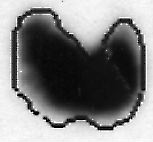 Commentary by Melissa Freeman MD, PGY2
Commentary by Melissa Freeman MD, PGY2
Please also see Part I of this series
In 2002, the American Association of Clinical Endocrinologists (AACE), the American Thyroid Association (ATA), and The Endocrine Society (TES) sponsored an evidence- based Consensus Development Conference with a panel of thirteen experts to address unresolved issues about subclinical thyroid dysfunction. Though these sponsors agreed with many of the recommendations made by the consensus, they felt that they relied too heavily on evidence-based medicine that did not yet exist. Two years later, the AACE, TES, and ATA published their own consensus statement, pronouncing that they found their expert’s negative recommendations regarding general screening and treatment to be “based primarily on a lack of evidence for benefit rather than on evidence for a lack of benefit.†Though they supported a cautious case approach, their consensus favored erring “on the side of early detection and treatment†until research proves otherwise.
Despite the fact that evidence is currently inconclusive to make a scientifically-supported recommendation, the current thinking regarding the treatment of subclinical hyperthyroidism appears to be somewhat unified amongst experts. There is a general consensus to monitor low-risk patients with serum TSH levels in the 0.1-0.4 mU/liter range and to treat elderly persons and those with heart disease, atrial fibrillation, or bone loss with serum TSH levels lower then 0.1 mU/liter. For all others, treatment is subjective.
In the treatment of subclinical hypothyroidism, the 2002 Consensus panel, finding existing evidence insufficient, recommends against routine treatment of patients with serum TSH levels of 4.5-10 mU/liter. The evidence for patients with serum TSH levels greater than 10 mU/liter was also felt to be inconclusive, but compelling enough to recommend treatment. These recommendations remain very controversial and many experts feel that treatment is warranted in certain patients at TSH levels less than 10 mU/liter. For example, in a randomized placebo-controlled study, Caraccio et al (2002), using intima-media thickness (IMT) as an end point for cardiovascular events, found an early increase of IMT in patients with subclinical hypothyroidism. After treatment with levothyroxine, lipid profiles improved and IMT decreased in patients with serum TSH levels less than 10 mU/liter. She believes these findings support treatment of patients with subclinical hypothyroidism. Likewise, many clinicians in practice note that patients with subclinical hypothyroidism would prefer to be “treated†for normalization of TSH, citing concerns such as weight control, bloating, concentrating ability, and mood.
A multitude of other questions remain regarding the treatment of subclinical thyroid dysfunction. Should we be more cautious about for whom we obtain TFTs? Should abnormal serum TSH results be repeated after a certain time period and should antithyroperoxidase antibody levels be tested at such a time since they may be used to predict whether an individual will develop clinical hypothyroidism? Should the reference ranges of TFTs be readjusted to avoid areas of uncertainty? Is subclinical thyroid disease on the spectrum of overt thyroid disease and if so is it usually progressive? How often does subclinical thyroid dysfunction self-resolve? Should there be routine screenings, especially for females over a certain age? Of importance, the issue of abnormal thyroid function tests in the elderly population requires attention. In this population, drug therapy and illness can easily alter TSH and inappropriately treating such patients may pose more severe consequences in addition to contributing to polypharmacy. A study by Wilson et al. (2006) sought to determine the prevalence of sublicinical thyroid dysfunction in an elderly population adjusting for these very confounding factors and the need for screening. They found a very low prevalence of subclinical thyroid dysfunction in these patients and concluded that routine screening was unnecessary without a robust morbidity risk.
At a time of great technology and evolving medicine, we continue to detect and explore these possible “pre-stages†to established overt diseases like diabetes, hypertension, and thyroid disease. It is likely that discovering whether subclinical thyroid disease actually progresses to overt thyroid disease will heavily weigh in on the need to treat this entity. Currently, we must look forward to future quality, randomized research studies and hope that the various professional groups continue to work on a succinct consensus. Until then, physicians must be aware that the only true certainty we have regarding the treatment of subclinical thyroid disease is a fairly uniform uncertainty; treatment decisions should be on a case-by-case basis after considering the specific risks and benefits to the patient.
References:
Caraccio, N., Ferrannini, E, Monzani, F. Lipoprotein profile in subclinical hypothyroidism: response to levothyroxine replacement; a randomized controlled study. J Clin Endocrinol Metab. 2002; 87: 1533-1538.
Cooper, David S.. Approach to the patient with subclinical hyperthyroidism. J Clin Endocrinol and Metab. 2007; 92(1): 3-9.
Hossein, G. R., Tuttle, M. H., Baskin, J., Fish, L., Singer, P., McDermott, M. T. . Consensus Statement: A Joint Statement on Management from the American Association of Clinical Endocrinologists, the American Thyroid Association, and the Endocrine Society. J Clin Endocrinol and Metab. 2005; 90(1): 581-585.
Parle JV, Franklyn JA, Cross KW, Jone SC, Sheppard MC. Prevalence and follow-up of abnormal thyrotropin concentrations in the elderly in the United Kingdom. J Clin Endocrinol. 1991 34: 77-83.
Roberts, L.M., Pattison, H., Roalfe, A., Franklyn,J., Wilson, S., Hobbs, R., Parle, J. V.. Is subclinical thyroid dysfunction in the elderly associated with depression or cognitive dysfunction? Annals of Intern Med, 2006; 145: 573-581.
Ross, D. “Subclinical hypothyroidism,†“Subclinical hyperthyroidism†@UpToDate.com, accessed 6/28/07, 12:40pm.
Sawin CT, Geller A., Kaplan MM, Bacharch P, Wilson PW, Hershman JM. Low serum thyrotropin concentrations in older persons without hyperthyroidism. Arch Intern Med. 1991; 151: 165-168.
Wartofsky, L., Dickey, R. A. The evidence for a narrower thyrotropin reference range is compelling. J Clin Endocrin and Metab. 2005; 90(9): 5483-5488.
Wilson, S., Parle, J., Roberts, L, Roalfe, A. Hobbs, R., Clark, P., Sheppard, M., Gammage M., Pattison, H., Jayne, A. F. Prevalence of subclinical thyroid dysfunction and its relationship to socioeconomic deprivation in the elderly: a community-based cross-sectional survey. J Clin Endocrin and Metab. 2006; 91(12): 4809-4816.
